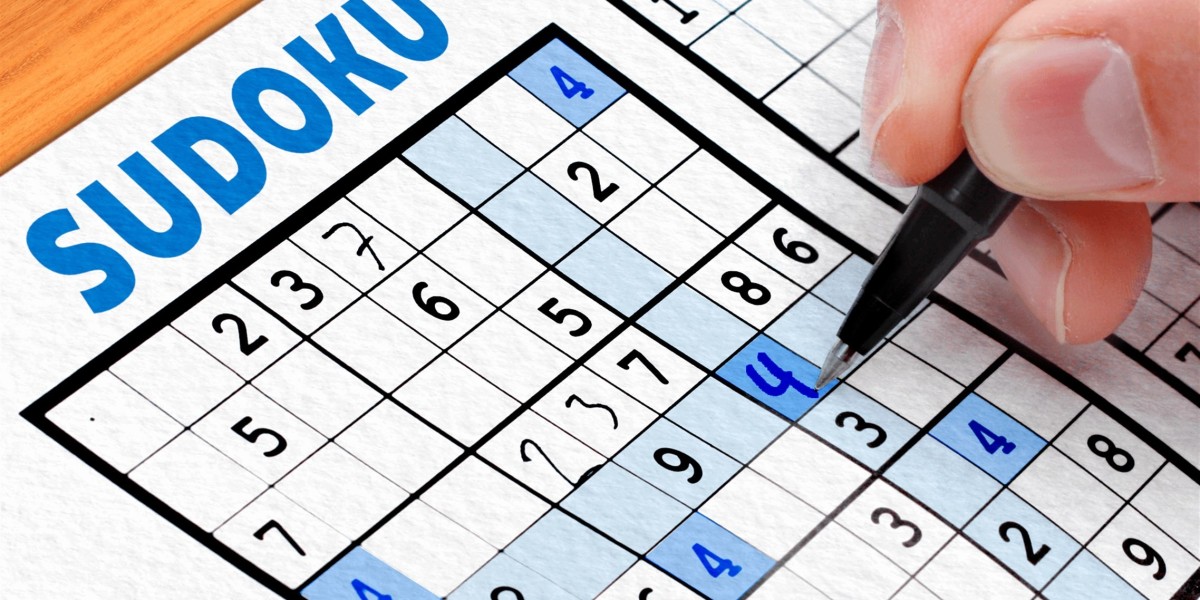I never thought I’d fall in love with a grid of numbers. Honestly, when I first saw Sudoku puzzles years ago, I assumed they were just another boring math exercise disguised as a game. Numbers? Logic? No storyline? It didn’t sound like something that could possibly be fun. But fast-forward to today, and I find myself losing track of time, squinting at a 9x9 grid, whispering “come on, just one more cell” like a gambler who swears they can quit anytime.
It started innocently enough. I was stuck on a long train ride, my phone battery dangerously low, and the only offline game available was a Sudoku app I had downloaded ages ago and never opened. Out of sheer boredom, I tapped it. A simple puzzle popped up—9 rows, 9 columns, and a few scattered numbers smiling up at me like an unfinished sentence waiting to be completed. “Fine,” I thought. “Let’s see what this is about.”
The First Hook
At first glance, Sudoku looks deceptively easy. The rule is simple: fill each row, column, and 3x3 box with numbers 1 through 9 without repeating any digits. Easy enough, right? But then you realize every number you place has a ripple effect—what you write in one box constrains every other possibility around it. It’s like playing chess with yourself, except both players are equally stubborn.
That first puzzle took me 45 minutes. I remember the small triumph of filling in that final number, the tiny sound effect of “puzzle complete!” from the app, and the weird rush of satisfaction that followed. I wasn’t solving world hunger, but in that moment, it felt like I had achieved something monumental. I was hooked.
When Puzzles Become Personal
It’s funny how Sudoku gradually sneaks into your life. What began as a casual game on a train turned into a daily ritual. I started doing one puzzle with my morning coffee, treating it like a brain warm-up before work. It was peaceful—just me, the numbers, and that satisfying click when a pattern made sense.
But of course, as with any addiction, things escalated. Soon I wasn’t satisfied with “easy” puzzles anymore. I needed a challenge. I switched to “hard” mode, then “expert.” That’s when the real madness began.
There’s something uniquely humbling about staring at a Sudoku grid that refuses to make sense. You start confident, pencil poised (or finger hovering), and ten minutes later you’re muttering to yourself, questioning your intelligence, your patience, and occasionally your life choices. “Why can’t I find a single number that fits? How is this even possible?”
Then—bam!—a small breakthrough. You spot a hidden pair, a naked single, or that one clever deduction that unlocks the whole section. The satisfaction is immediate and addictive. It’s a dopamine rush born purely out of logic. No luck, no guesswork—just reasoning, observation, and persistence.
The Emotional Rollercoaster of a Sudoku Addict
Playing Sudoku regularly has turned me into a strange mix of calm monk and frustrated detective. Some mornings, I glide through puzzles, feeling like a logic whisperer. Other days, I slam my coffee cup down because a single wrong number has snowballed into an impossible grid.
Once, I spent nearly an hour on a “fiendish” puzzle only to realize I’d made a single error twenty minutes in. The worst part? I knew something felt off, but I ignored that gut feeling. When I finally hit the “check” button, half the grid lit up red in accusation. I laughed out loud—partly out of frustration, partly because I realized how invested I had become in a bunch of squares and digits.
But that’s part of the charm. Sudoku teaches humility. You can’t brute-force your way through it. You have to slow down, breathe, and think clearly. It’s a mindfulness exercise disguised as a logic challenge.
What Sudoku Taught Me
Beyond the entertainment, I’ve learned a few surprising things from my Sudoku habit.
1. Patience is a skill.
Sudoku rewards steady thinking, not speed. When I rush, I make mistakes. When I slow down, I see patterns that were invisible before.
2. Details matter.
It’s incredible how often a single missed clue—a tiny “7” that could only fit in one spot—can make or break an entire puzzle. It’s a reminder that in life, the smallest details often have the biggest impact.
3. It’s okay to reset.
Sometimes you hit a dead end. Instead of forcing your way forward, it’s better to erase, backtrack, and start over. That’s not failure—it’s strategy.
4. Progress doesn’t always look exciting.
You might fill in one number after 10 minutes of silence, but that small step can unlock the whole grid. The same is true in real life: even small progress counts.
My Favorite Sudoku Moments
A few months ago, I tackled what the app labeled as an “Evil” puzzle (yes, that’s an actual difficulty level). I remember sitting at my desk, determined to solve it without hints. An hour passed. Then two. My brain was melting. My coffee was cold. I was on the verge of quitting when suddenly everything clicked. The patterns lined up like dominos falling in perfect order. One number led to another, and before I knew it, the grid was complete.
That rush—pure satisfaction mixed with disbelief—is what keeps me coming back. I literally fist-pumped in my room like I had just won a gold medal. My cat gave me a very judgmental look, but I didn’t care.
There was another time I introduced Sudoku to a friend who swore they hated logic games. I convinced them to try one “easy” puzzle over lunch. They rolled their eyes but agreed. Twenty minutes later, they were leaning over the table, muttering strategies and erasing numbers furiously. When they finished, they looked at me and said, “Okay, I get it now.”
That’s the magic of Sudoku—it’s universal. You don’t need language, background, or luck. Just logic and patience.
A Few Tips for Fellow Puzzlers
Over time, I’ve picked up a few tricks that make the game more enjoyable:
Start with the obvious. Look for numbers that already appear frequently—they often limit possibilities elsewhere.
Use pencil marks. Don’t rely on memory. Fill in potential numbers lightly (or use the note function on apps). It helps you visualize patterns.
Avoid guessing. Sudoku is entirely solvable through logic. Guessing usually leads to chaos later.
Take breaks. Walking away for a few minutes can help your brain reset. I can’t count how many times I solved a “stuck” puzzle right after returning with a fresh mind.
Enjoy the process. The joy isn’t just in finishing—it’s in the thinking, the patience, and that small spark of satisfaction with every correct deduction.
Why It’s Still So Addictive
Sudoku hits a rare sweet spot: it’s simple to learn, endlessly challenging, and strangely meditative. There’s no pressure from other players, no flashy graphics, no time-based stress (unless you add it yourself). Just you and your mind, facing off in quiet competition.
Sometimes I play it to wake up my brain in the morning; other times, I use it to unwind at night. It’s become my go-to escape from the digital chaos of scrolling and notifications. Ironically, it’s one of the few phone activities that reduces my screen fatigue.
And maybe that’s why I love it so much. Sudoku feels honest. There’s no luck involved, no algorithms deciding what you see next. Just logic, patience, and clarity.
Final Thoughts
If you’ve never tried Sudoku, give it a shot. You might be surprised at how satisfying it feels to solve something purely through your own reasoning. And if you’ve already been down this rabbit hole, you know exactly what I’m talking about—the frustration, the joy, the tiny victories that make you feel like a genius for five minutes.








